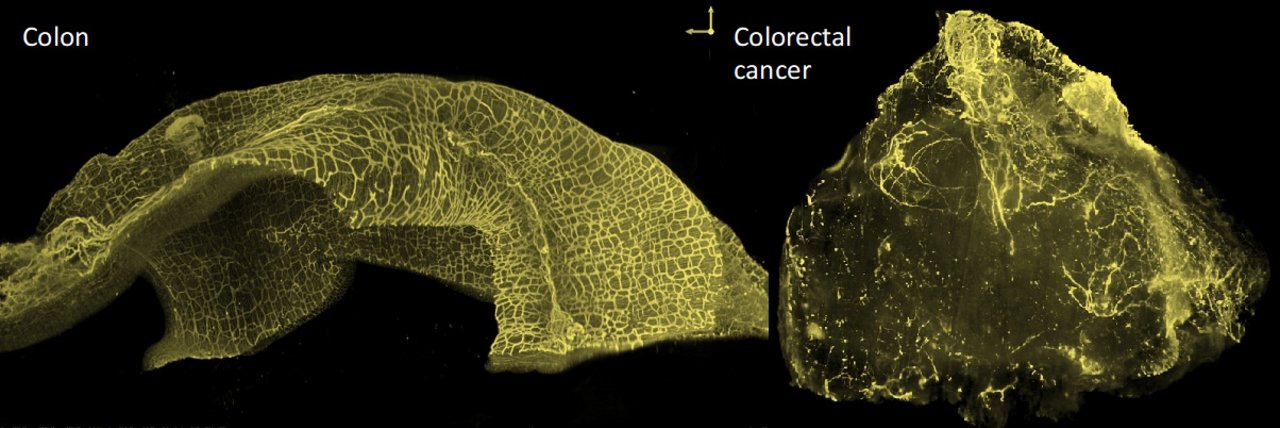Seed Funding Program 2022
TraceMe
Dissecting the cancer / neuron interplay in gastrointestinal primary tumors and metastasis via Trace’n’Seq - precision medicine in gastrointestinal cancer neuroscience
Coordinators
 dkfz.de
dkfz.de
Andreas Trumpp
Stem Cells and Cancer, DKFZ
 dkfz.de
dkfz.de
Sebastian Schölch
DKFZ-Hector Junior Clinical Cooperation Unit Translational Surgical Oncology, UMM
Detailed description
A histopathological hallmark of pancreatic ductal adenocarcinoma (PDAC) and other malignancies including colorectal cancer (CRC) and soft tissue sarcoma is desmoplastic tumor stroma featuring pronounced infiltration by nerve fibers. The extent of neuronal infiltration correlates directly with pain perception and tumor aggressiveness. Although these findings open a new area of cancer research, these processes have remained elusive due to a technical challenge: The cell bodies (somata) of tumor-infiltrating neurons are not located within the tumor itself, but in the paravertebral and pre-aortic ganglia of the peripheral nervous system. Thus, expression analyses including single cell RNAseq experiments of tumor tissue exclude neurons as their cell bodies (containing most of the RNA) are located centimeters away from the actual tumor. To bridge this gap, a disruptive method called "Trace’n’Seq" has been developed, which allows identification of organ- or tumor-specific neurons by in vivo retrograde fluorescence labelling. This way, single tumor- or healthy tissue-infiltrating neurons in ganglia of the peripheral nervous system can be precisely identified and isolated for single cell profiling. Applying Trace’n’Seq to murine PDAC-innervating neurons revealed severe transcriptomic alterations in comparison to neurons innervating the healthy pancreas. Neurons acquire a “cancer-nerve-state”, characterized by upregulation of tumor-driving, immune modulating and neuronal guidance factors. In this project, (I) the “cancer nerve state” signature in human surgical specimens will be validated, (II) the "Trace-n-Seq" technology will be used to further decode regulatory mechanisms for PDAC and CRC metastasis in the lung and liver in comparison to liver and lung primary tumors by using mouse models already well established. Furthermore, (III) molecular alterations specific to neurons innervating distinct cancers as well as shared mechanisms promoting disease in various settings will be identified. The final goal of this project is to (IV) disrupt mechanisms of cancer induced neuronal reprogramming in vivo and in vitro to define suitable candidates for tumor microenvironment targeting precision medicine.
